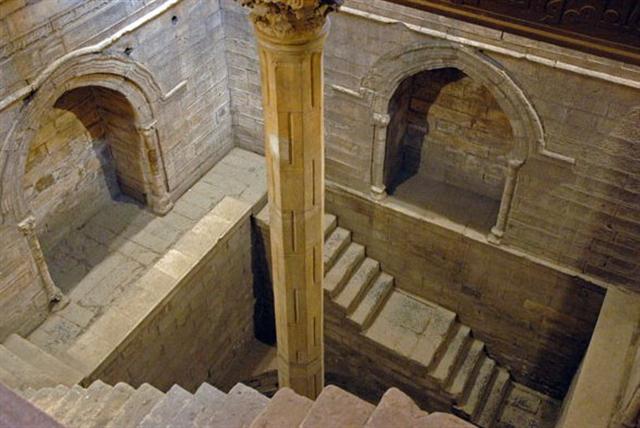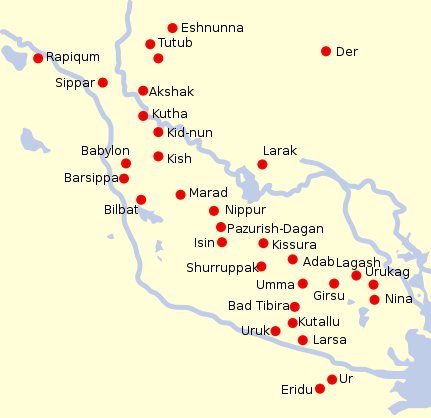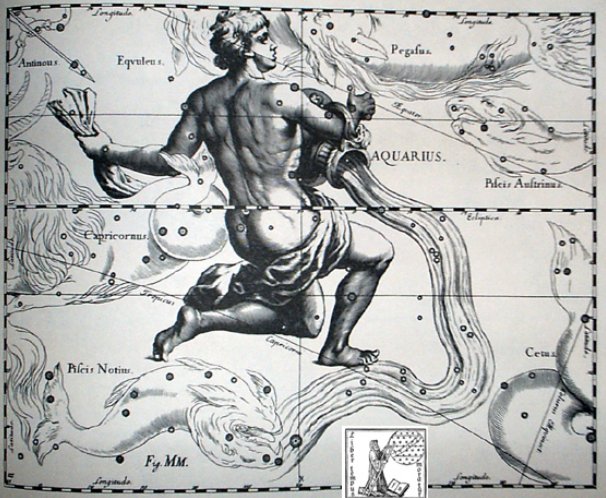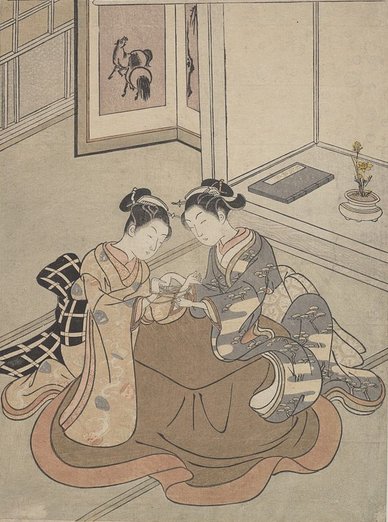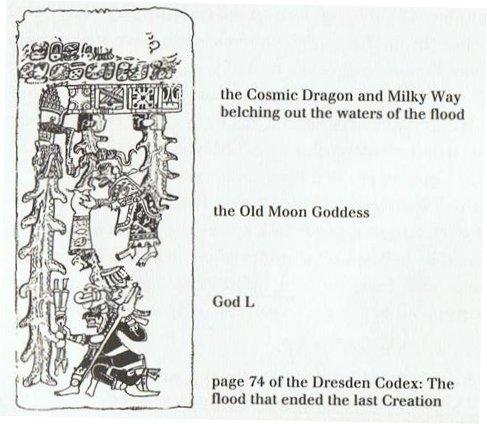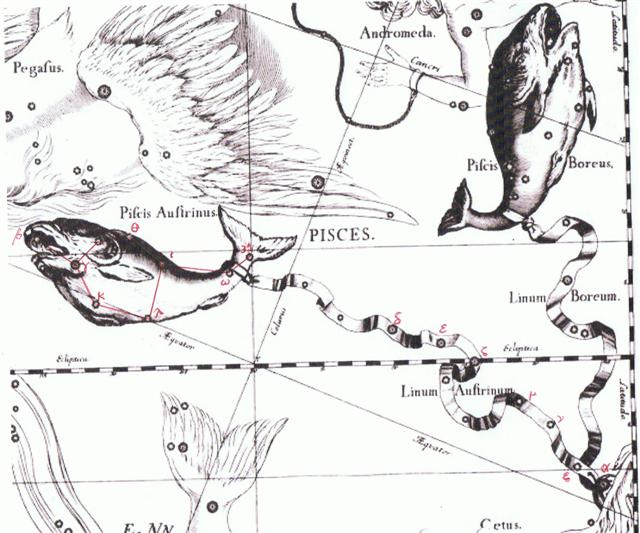The dead Balder was put onboard his ship which was pushed into the water, while the flames consumed it all.
When was this? It happened anew every year, it was due to how the rays from the sun consumed ('ebb') and then returned ('flood').
... He was moreover confronted with identifications which no European, that is, no average rational European, could admit. He felt himself humiliated, though not disagreeably so, at finding that his informant regarded fire and water as complementary, and not as opposites. The rays of light and heat draw the water up, and also cause it to descend again in the form of rain. That is all to the good. The movement created by this coming and going is a good thing. By means of the rays the Nummo draws out, and gives back the life-force. This movement indeed makes life. The old man realized that he was now at a critical point. If the Nazarene did not understand this business of coming and going, he would not understand anything else. He wanted to say that what made life was not so much force as the movement of forces. He reverted to the idea of a universal shuttle service. 'The rays drink up the little waters of the earth, the shallow pools, making them rise, and then descend again in rain.' Then, leaving aside the question of water, he summed up his argument: 'To draw up and then return what one had drawn - that is the life of the world' ... Ogotemmêli here explained it as a kind of vertical cosmic shuttle service. But looked at from the other (the right ascension) view it was like the movements when weaving, this way and then back again as seen against the horizon in the east. ... Instead of that old, dark, terrible drama of the king's death, which had formerly been played to the hilt, the audience now watched a solemn symbolic mime, the Sed festival, in which the king renewed his pharaonic warrant without submitting to the personal inconvenience of a literal death. The rite was celebrated, some authorities believe, according to a cycle of thirty years, regardless of the dating of the reigns; others have it, however, that the only scheduling factor was the king's own desire and command. Either way, the real hero of the great occasion was no longer the timeless Pharaoh (capital P), who puts on pharaohs, like clothes, and puts them off, but the living garment of flesh and bone, this particular pharaoh So-and-so, who, instead of giving himself to the part, now had found a way to keep the part to himself. And this he did simply by stepping the mythological image down one degree. Instead of Pharaoh changing pharaohs, it was the pharaoh who changed costumes. The season of year for this royal ballet was the same as that proper to a coronation; the first five days of the first month of the 'Season of Coming Forth', when the hillocks and fields, following the inundation of the Nile, were again emerging from the waters. For the seasonal cycle, throughout the ancient world, was the foremost sign of rebirth following death, and in Egypt the chronometer of this cycle was the annual flooding of the Nile. Numerous festival edifices were constructed, incensed, and consecrated; a throne hall wherein the king should sit while approached in obeisance by the gods and their priesthoods (who in a crueler time would have been the registrars of his death); a large court for the presentation of mimes, processions, and other such visual events; and finally a palace-chapel into which the god-king would retire for his changes of costume. Five days of illumination, called the 'Lighting of the Flame' (which in the earlier reading of this miracle play would have followed the quenching of the fires on the dark night of the moon when the king was ritually slain), preceded the five days of the festival itself; and then the solemn occasion (ad majorem dei gloriam) commenced. The opening rites were under the patronage of Hathor. The king, wearing the belt with her four faces and the tail of her mighty bull, moved in numerious processions, preceded by his four standards, from one temple to the next, presenting favors (not offerings) to the gods. Whereafter the priesthoods arrived in homage before his throne, bearing the symbols of their gods. More processions followed, during which, the king moved about - as Professor Frankfort states in his account - 'like the shuttle in a great loom' to re-create the fabric of his domain, into which the cosmic powers represented by the gods, no less than the people of the land, were to be woven ... ... I have read somewhere (possibly in Needham's Science and Civilisation in China) that when the Europeans tried to introduce their superior mills in China they failed. The Chinese kept to their traditional models with horizontal shafts and they could not accept the European vertical shaft. I think the reason was the Chinese system of correspondendes. Everyone could see how the stars in the sky are revolving as if in a mill with a horizontal shaft - mills in general had to be constructed like that, to do otherwise would be an offense to Mother Nature ...
Such were the words of THE MIGHTY WEAVER:
When the hour-glass of time became empty it evidently turned itself upside down:
This inversion implied the whole cycle was divided into a pair. The circumference of a circle was always the radius twice π. When such a half-cycle was finished there was a transportation to the beginning again, when the other one (his tanist) took over.
... The manner of his death can be reconstructed from a variety of legends, folk-customs and other religious survivals. At mid-summer, at the end of a half-year reign, Hercules is made drunk with mead and led into the middle of a circle of twelve stones arranged around an oak, in front of which stands an altar-stone; the oak has been lopped until it is T-shaped. He is bound to it with willow thongs in the 'five-fold bond' which joins wrists, neck, and ankles together, beaten by his comrades till he faints, then flayed, blinded, castrated, impaled with a mistletoe stake, and finally hacked into joints on the altar-stone. His blood is caught in a basin and used for sprinkling the whole tribe to make them vigorous and fruitful. The joints are roasted at twin fires of oak-loppings, kindled with sacred fire preserved from a lightning-blasted oak or made by twirling an alder- or cornel-wood fire-drill in an oak log. The trunk is then uprooted and split into faggots which are added to the flames. The twelve merry-men rush in a wild figure-of-eight dance around the fires, singing ecstatically and tearing at the flesh with their teeth. The bloody remains are burnt in the fire, all except the genitals and the head. These are put into an alder-wood boat and floated down the river to an islet; though the head is sometimes cured with smoke and preserved for oracular use. His tanist succeeds him and reigns for the remainder of the year, when he is sacrificially killed by a new Hercules ...
... Yes, said the maiden. She stretched out her right hand, up there in front of the bone. And then the bone spit out its saliva, which landed squarely in the hand of the maiden. And then she looked in her hand, she inspected it right away, but the bone's saliva wasn't in her hand. It is just a sign I have given you, my saliva, my spittle. This, my head, has nothing on it - just bone, nothing of meat. It's just the same with the head of a great lord: it's just the flesh that makes his face look good. And when he dies, people get frightened by his bones. After that, his son is like his saliva, his spittle, in his being, whether it be the son of a lord or the son of a craftsman, an orator. The father does not disappear, but goes on being fulfilled. Neither dimmed nor destroyed is the face of a lord, a warrior, craftsman, an orator. Rather, he will leave his daughters and sons. So it is that I have done likewise through you. Now go up there on the face of the earth; you will not die. Keep the word. So be it, said the head of One and Seven Hunaphu - they were of one mind when they did it ... In other words, the continuation was secured by Woman. Only she could give birth. ... When this tremendous task had been accomplished Atea took a third husband, Fa'a-hotu, Make Fruitful. Then occurred a curious event. Whether Atea had wearied of bringing forth offspring we are not told, but certain it is that Atea and her husband Fa'a-hotu exchanged sexes. Then the [male] eyes of Atea glanced down at those of his wife Hotu and they begat Ru. It was this Ru who explored the whole earth and divided it into north, south, east, and west ... Although this happened anew every year it should be determined by a specific day. Reasonably the position of Canopus pointed at where we should look.
... At the time of the Bull the great Agastya had been located in APRIL 21 (111), but since then his star had been pushed forward in the year to day 111 + 64 = 175 (St John's Day) = *95 (= 364 / 4 days after the 3-25, the Julian equinox). And at the time of Bharani the star of Agastya (Eridu) had been in right ascension day *95 - *41 = *54 ("May 14) - i.e., 50 right ascension days after the Julian equinox. At the time of rongorongo the position of Canopus was *6 days before Sirius brought down rain (ûa).
And at that time of the year the Full Moon was visible close to the 3 bow stars in Sagittarius - Kaus Medius (*277), Kaus Australis (*278), and Kaus Borealis (*279). *95 (Canopus) + *183 = *278 (Kaus Australis) ...
... In reference to your question, 'How do the natives of Easter Island obtain fire?' I [Mr. Croft] have to answer that they cannot tell. Their forefathers, like the ancient Romans, had their 'vestal' fires, preserved from ancient times; but the 'Vestal Virgins' of Easter Island were gray-headed and gray-bearded old heathen priests. It was a part of their duty, sacredly attended to, to guard the eternal fire, which was neutral, together with its guardians, in all wars. From this sacred fire the whole community - at one time a large one - could obtain that useful 'element' from time to time, as they needed it, for culinary and other purposes. This custom is still kept up by a portion of the community, while another portion rely on the matches of Mr. Dutrou-Bornier for their supply. Another portion of the community have learned from Gambier Islanders (who were sent there by the Catholics, to assist the priests) how to make fire: not by rubbing two sticks together, as you ask in your letter, but by rubbing the point of one stick on the side of the other, until it makes a hot groove and eventually fire - a work generally of from five to ten minutes. In order to illustrate this, I have had a photograph taken for you, showing you the natives in the very act of producing fire, and have also sent you the identical sticks used on that occasion. You will notice that the wood is of a soft and spongy nature. It grows abundantly on these islands, and is a variety known as the Hibiscus tiliaceus, and called by the natives 'Purau' and 'Fau', pronounced 'Purow' and 'Fow', 'ow' being sounded as in the word 'how'. You can, if you wish, obtain large quantities of it, by going on board the vessels carrying oranges from these islands to San Francisco; the orange crates are mostly made of it. And you could also get one of the Tahitian or other islanders, sailors on board of such vessels, to make fire for you by the aid of these sticks, and thus practically or ocularly answer your own question, as they are all experienced in the art ... ... In the crude anatomical knowledge of these races it is easy to see what ua [ûa] really is, the cordlike bodies in the flesh which appear under the skin. Thus vein and tendon are the same thing and one word describes them ... ... A man had a daughter who possessed a wonderful bow and arrow, with which she was able to bring down everything she wanted. But she was lazy and was constantly sleeping. At this her father was angry and said: 'Do not be always sleeping, but take thy bow and shoot at the navel of the ocean, so that we may get fire.' The navel of the ocean was a vast whirlpool in which sticks for making fire by friction were drifting about. At that time men were still without fire. Now the maiden seized her bow, shot into the navel of the ocean, and the material for fire-rubbing sprang ashore ... This means the day for 'changing sex from man to woman' had been pushed later and later in the sun calendar. Early it would have coincided with the return of the summer year, during which the heat from the sun would consume all the waters released in the winter season.
And simulataneously (with the precession moving the Sun) Sirius would have come earlier and earlier in the star calendar. This remarkable and uniqe great Star was not only the brightest in the night sky but evidently also the 'dream-soul' of daytime Sun, because he moved hand in hand with how the Sun preceded (as recorded in the Julian calendar, where the map of the year was measured as 365¼ days). ... The Sothic cycle was based on what is referred to in technical jargon as 'the periodic return of the heliacal rising of Sirius', which is the first appearance of this star after a seasonal absence, rising at dawn just ahead of the sun in the eastern portion of the sky. In the case of Sirius the interval between one such rising and the next amounts to exactly 365.25 days - a mathematically harmonious figure, uncomplicated by further decimal points, which is just twelve minutes longer than the duration of the solar year ... In ancient Egypt they thought Sirius was behind the yearly rise of the Nile ... the seasonal cycle, throughout the ancient world, was the foremost sign of rebirth following death, and in Egypt the chronometer of this cycle was the annual flooding of the Nile ...
At the assumed time of the Bull the Sun would have risen simultaneously with Sirius 64 days later than in June 30 (181), viz. in JUNE 30 (181). Thus the other (more fixed) stars which at that time had happened to rise together with Sirius and the Sun would have changed their positions ahead in the Sun calendar with around 64 days. Disregarding the fact that none of the so-called fixed stars were remaining exactly at their ancient positions as observed against the starry dome it was anyhow possible to draw an idealized and useful map:
This, together with all the rest, suggests the fixed stars at the time of the Bull were kept firm in mind in order to avoid confusion, i.e. viewed as they would have been according to extrapolations back in time (disregarding their individual proper motions) from their current positions and by assuming the well known rule of the precession of the cardinal points of the Sun (and Sirius). ... The verdicts concerning the familiarity of ancient Near Eastern astronomers with the Precession depend, indeed, on arbitrary factors; namely, on the different scholarly opinions about the difficulty of the task. Ernst Dittrich, for instance, remarked that one should not expect much astronomical knowledge from Mesopotamia around 2000 B.C. 'Probably they knew only superficially the geometry of the motions of sun and moon. Thus, if we examine the simple, easily observable motions by means of which one could work out chronological determinants with very little mathematical knowledge, we find only the Precession.' There was also a learned Italian Church dignitary, Domenico Testa, who snatched at this curious argument to prove that the world had been created ex nihilo, as described in the first book of Moses, an event that supposedly happened around 4000 B.C. If the Egyptians had had a background of many millennia to reckon with, who, he asked, could have been unaware of the Precession? 'The very sweepers of their observatories would have known.' Hence time could not have begun before 4000, Q. E. D. ...
|
||||||||||||||||||||||||||||||||||||||||||||||||||||||||||||||||||||||||||||||||||||||||||||||||||||||||||||||||||||||||||||||||||||||||||||||||||||||||||||||||||||||||||||||||||||||||||||||||||||||||||||||||||||||||||||||||||||||||||||||||||||||||||||||||||||||||||||||||||||||||||||||||||||||||||||||||||||||||||||||||||||||||||||||||||||||||||
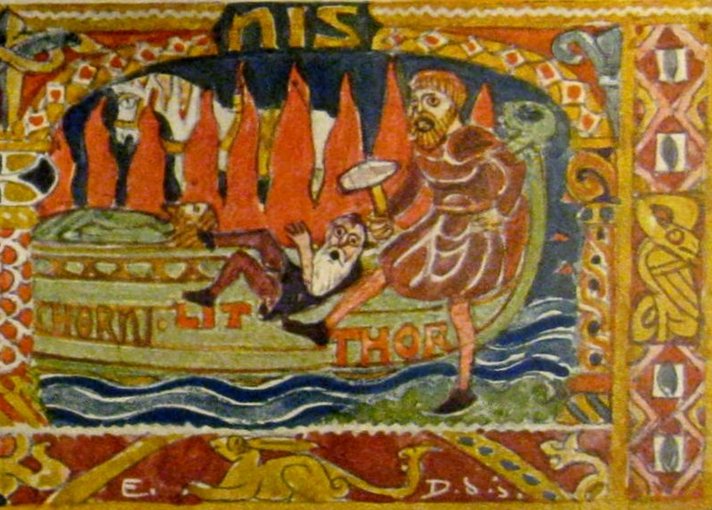
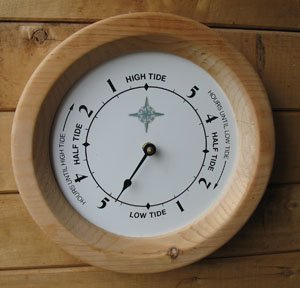
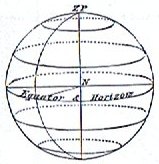
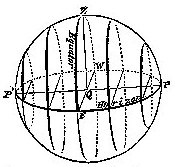
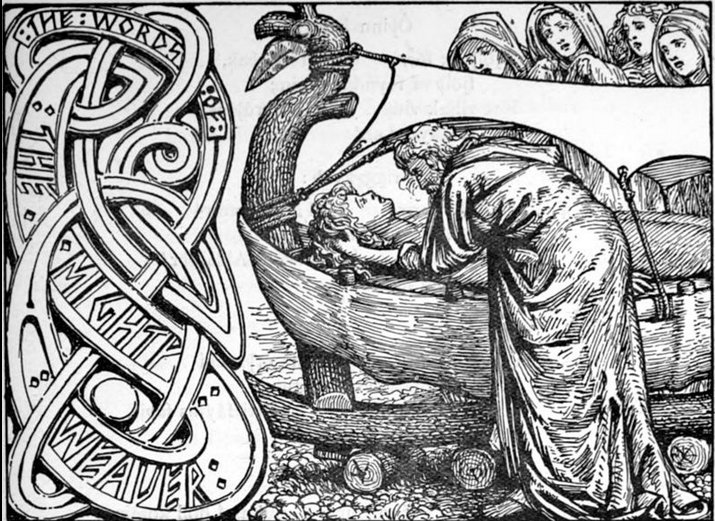


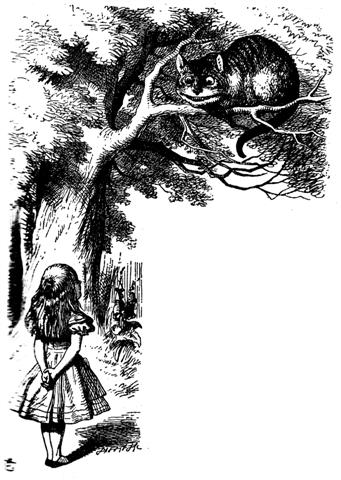


.jpg)

